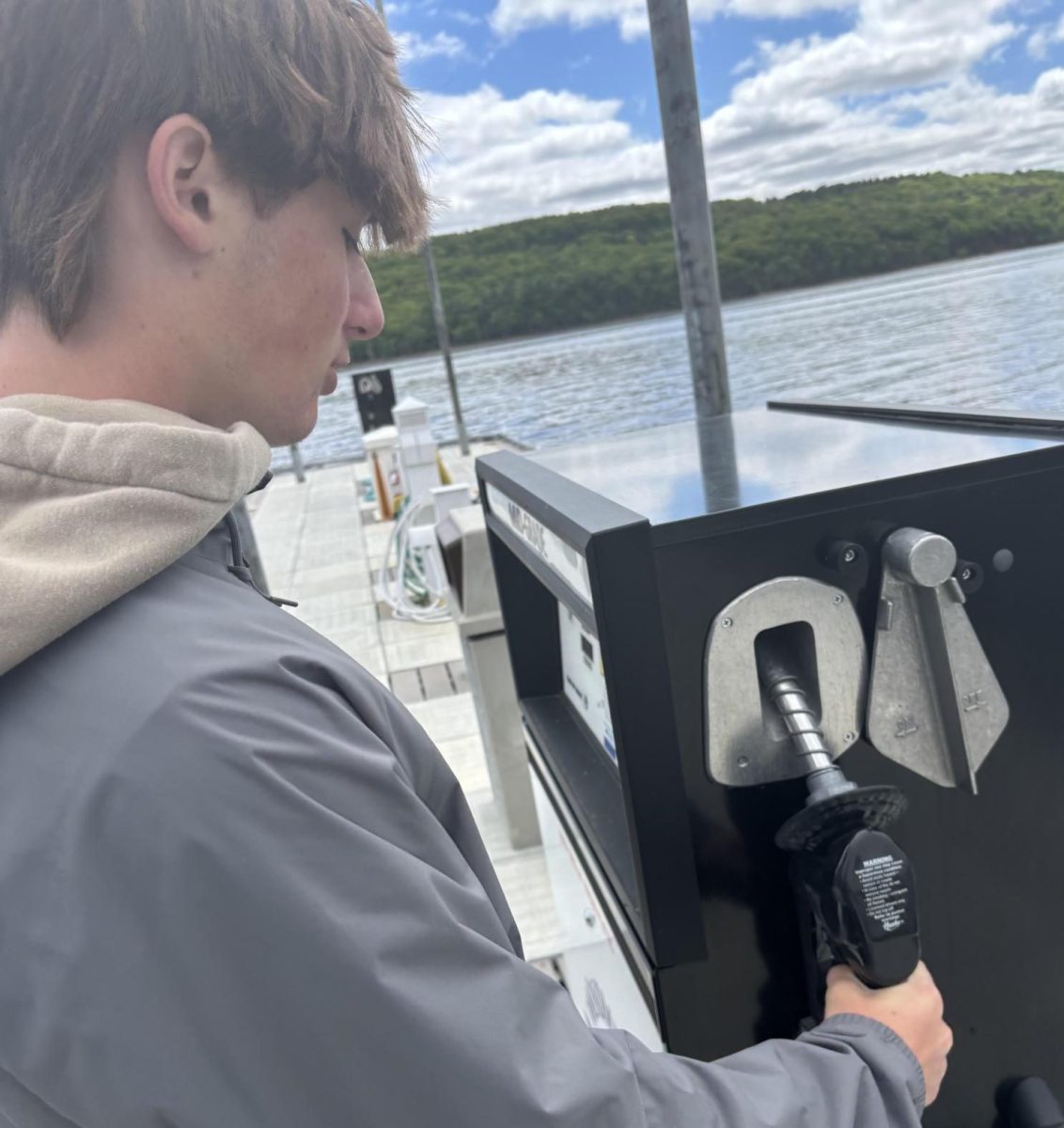The administration created a new phone policy this school year, which requires students to put their phones in a pouch for each class period. In addition, the administration added doors to the cafeteria entrance, to close the Pac off from the school during after hours.
As phones started to become a distraction, administrators decided to set up a strict phone policy to benefit the academics and learning of students. Every teacher has a wall pouch, in which students must put their phones at the beginning of class, they may get their cell phones once class ends. Along with that students are expected to leave their phone in their class while leaving the classroom to go to the restroom.
“The main goal is to be able to focus on learning.” Assistant Principal Matt Kraft said about the initial intent of the phone policy.
Cafeteria doors installed at the entrance of the cafeteria were also a new addition to the school year. The intent behind the cafeteria doors being added was to improve safety around the school and prevent citizens from the PAC from entering the school. The doors have many benefits such as closing the school off from the PAC after school hours and crowd control during the many lunches.
“The intent was for after-school sports, just to contain the public from going through the school for security purposes and to keep vandalism down,” security guard Joanne Sandal said.
A research study was done where they took a bunch of high school students and had them lay their phones down to see how many notifications they got in a typically 50-minute class period, and it turned out to be one notification a minute.
Junior Sofia Warzeka said it does help and makes her less distracted and more focused on her work.
The phone policy does not only incorporate phones but relates to all personal electronics. For example, Airpods, earbuds, gaming technology and other devices.
“Think about everything a phone can access, for example, Snapchat, music, fantasy football scores, etc, a lot of those opportunities can detract from learning,” Kraft said. “The personal technology policy incorporates smartphones, AirPods and earbuds.”
The cafeteria doors have more than one purpose. In the past during the lunches near the end, students crowd the exit of the cafeteria making it challenging for the one or two security guards to maintain and keep control. With the new doors, the security guards can simply shut the doors and will not have to worry about students slipping out.
Sandel explained how helpful it has been to her and her coworkers and “it just keeps the crowd from actually even lining up as they did last year, and the comings and goings.”
The administration hopes the new phone policy and cafeteria doors make the high school a better as well as a safer learning environment for all.







